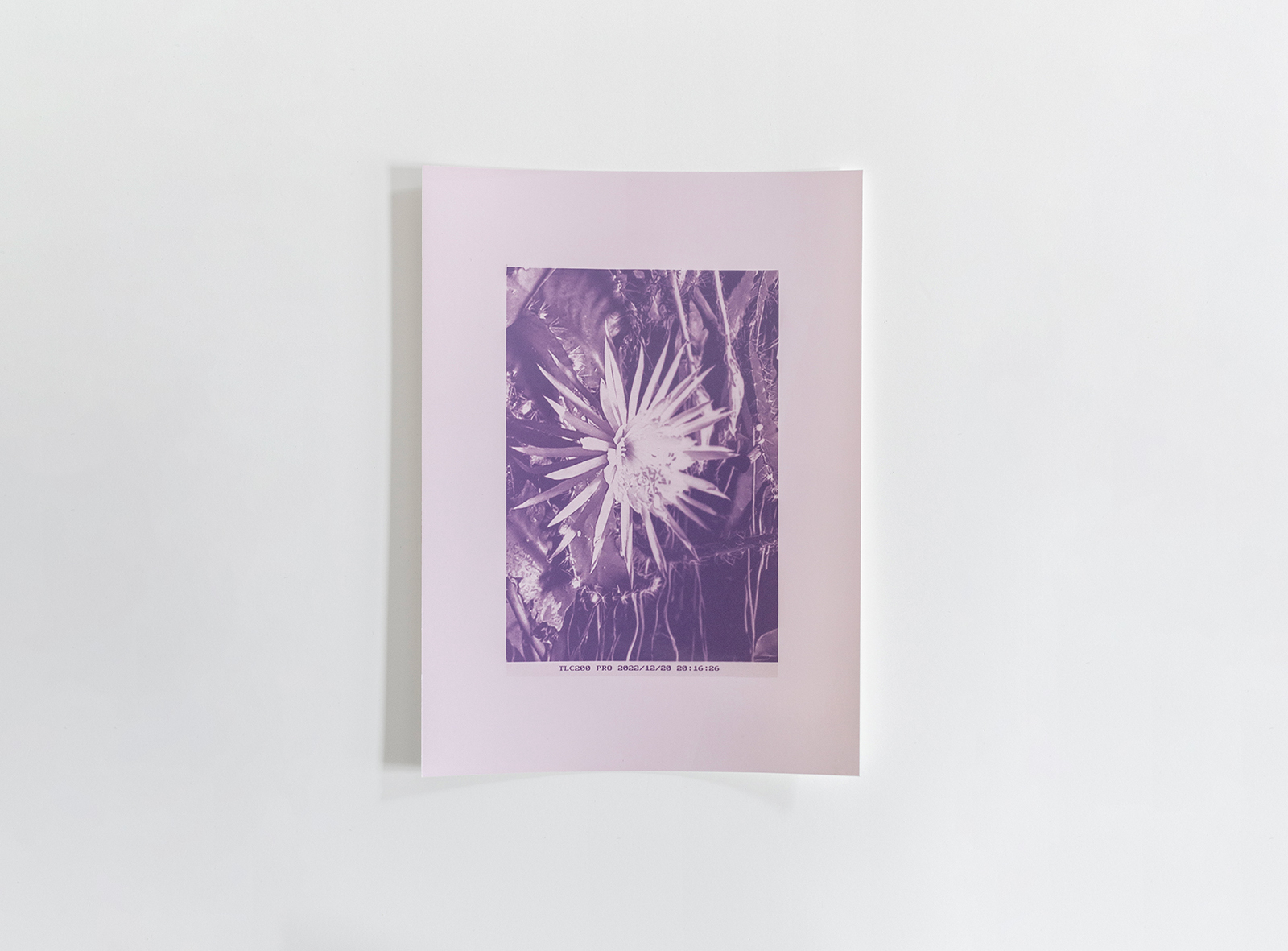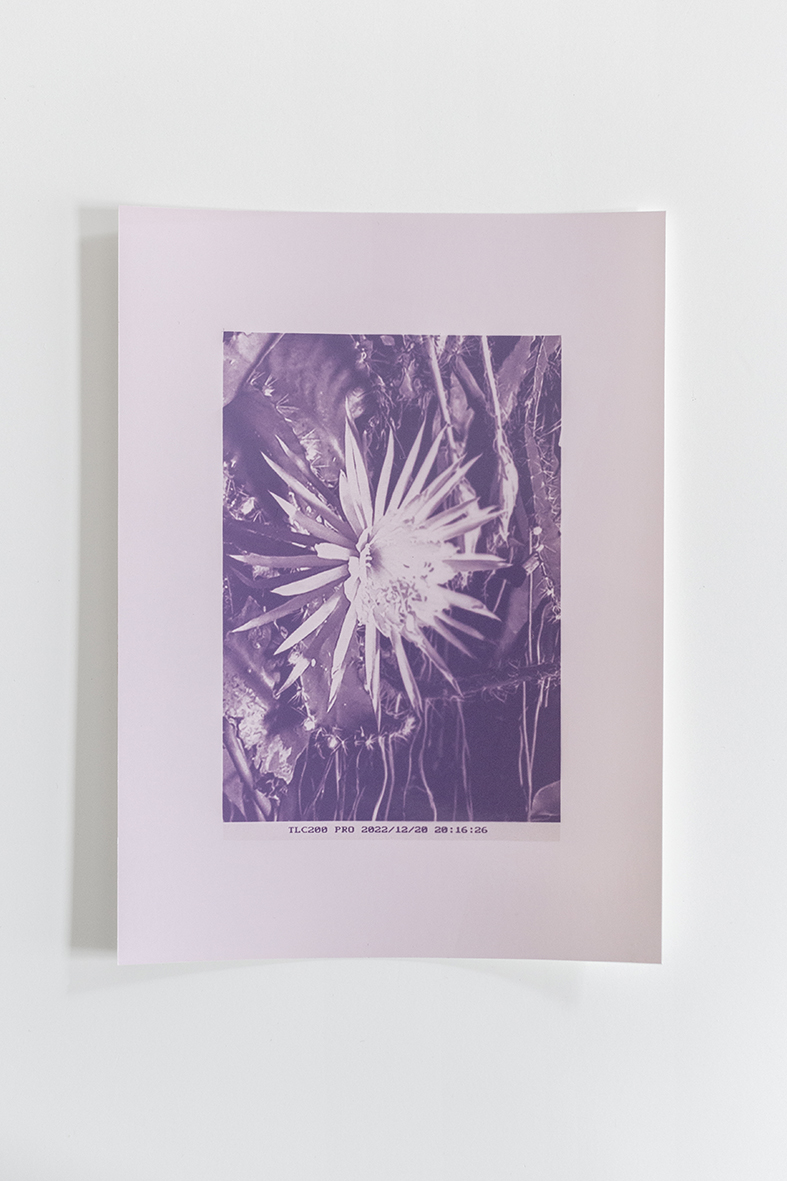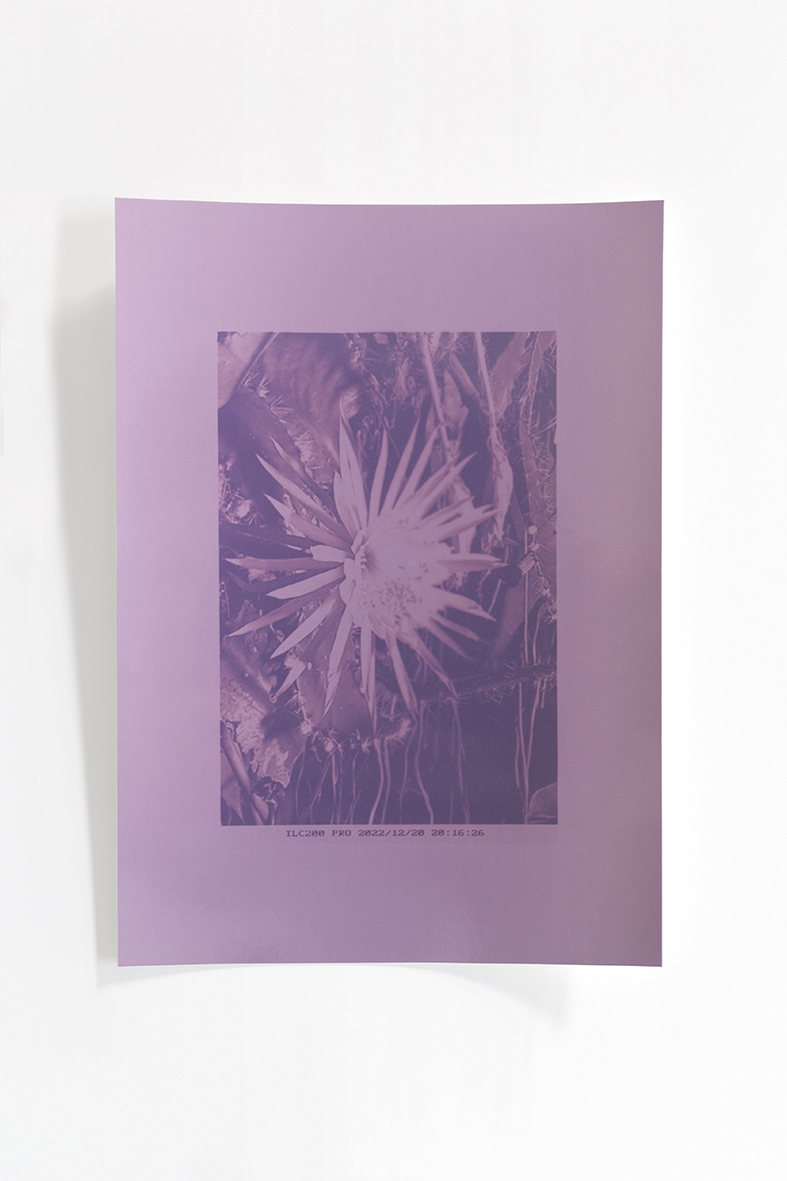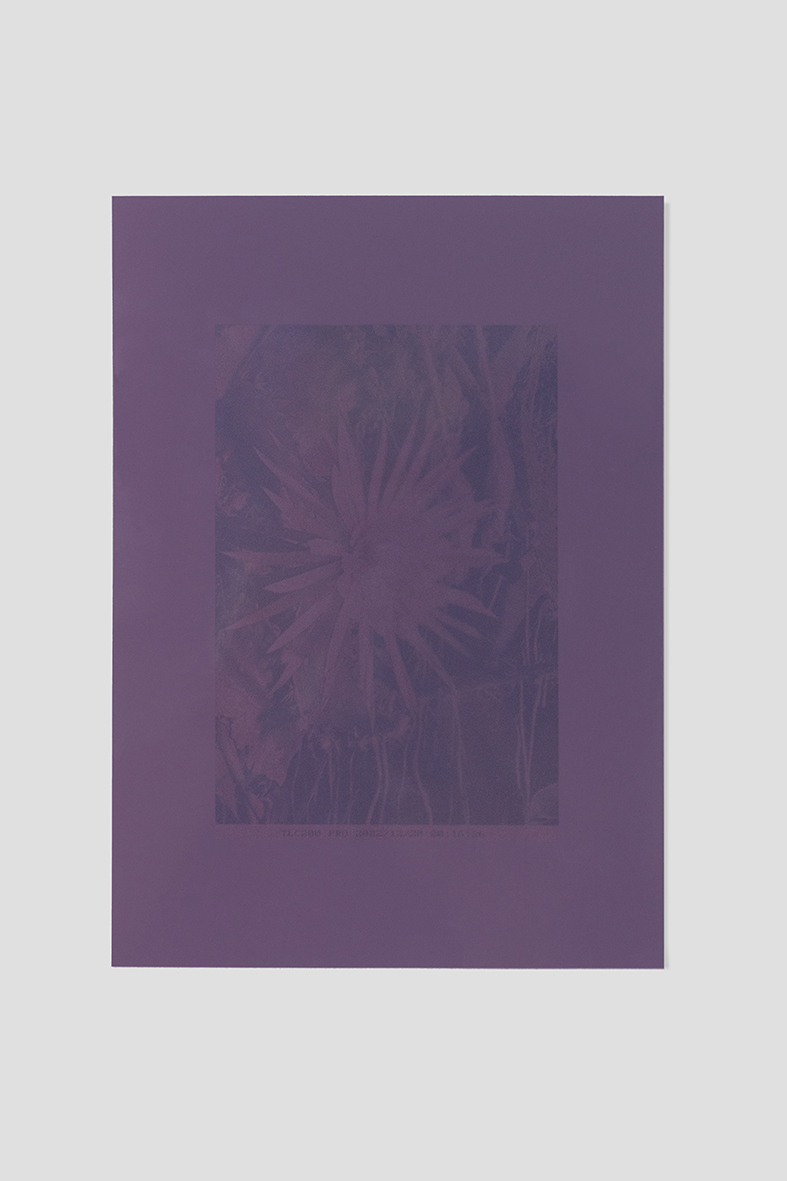
Moonflower
Martina della Valle, 2023
Lumen print on silver gelatin paper, 13×18 cm
Edition of 100. Produced on the occasion of Occulto 8: Photographic
ORDER
This edition is produced by exposing a sheet of photographic paper to ultraviolet light. Not being fixed, the image is destined to fade away gradually each time it is exposed to light and observed, and to be short-lived just like the flower it depicts.
Selenicereus wittii […] is, together with Epiphyllum Phyllanthus […] and Rhipsalis baccifera […], one of only three species of Cactaceae occurring in Central Amazonia. It is one of the most enigmatic members of the family. […]
The species was discovered in the Igapó-forests of the Rio Negro close to Manaus (Brazil) in 1899 at the time of the “rubber boom” by N.H. Witt, a German businessman and amateur collector. Subsequently, specimens were sent to K. Schumann in Berlin-Dahlem, the monographer of the family, who described it as Cereus wittii […].
Until now, published information on the biology, ecology, and vegetative and reproductive structures of this remarkable plant is practically non-existent. Colour illustrations and observations were published by the late Margaret Mee in the description “Moonflower” in her “Flowers of the Amazon Forests” […].
Individual flowers open for only one night. Anthesis commences after sunset; flowers are fully expanded about two hours later und start to close again at sunrise.
Barthlott et. al. (1997), „Selenicereus wittii (Cactaceae): an epiphyte adapted to Amazonian Igapó inundation forests”. Pl. Syst. Evol. 206:175-185.
Image credits: still from video, Universität Rostock, Botanischer Garten.



Learn more about Martina’s work at https://martinadellavalle.info/